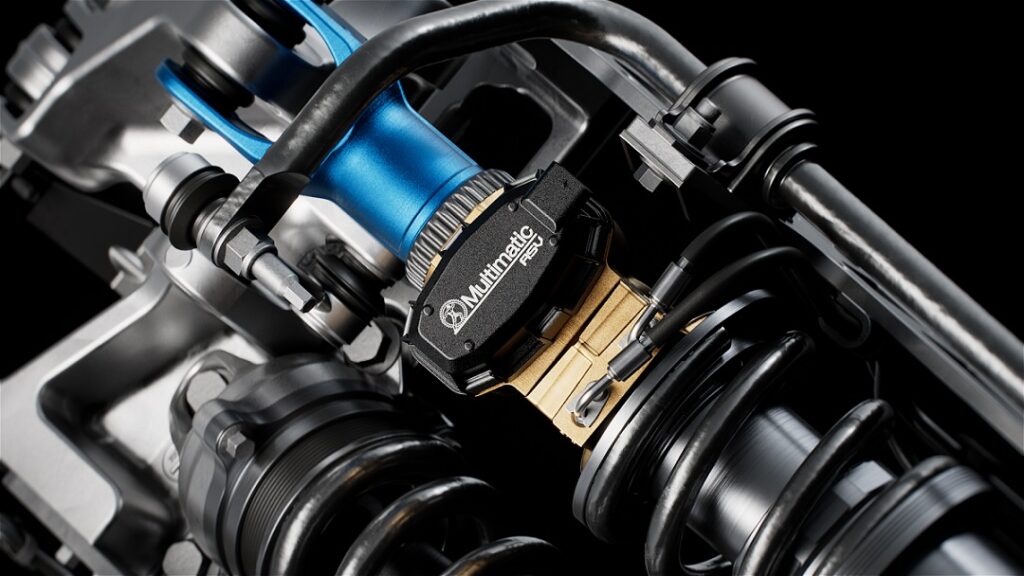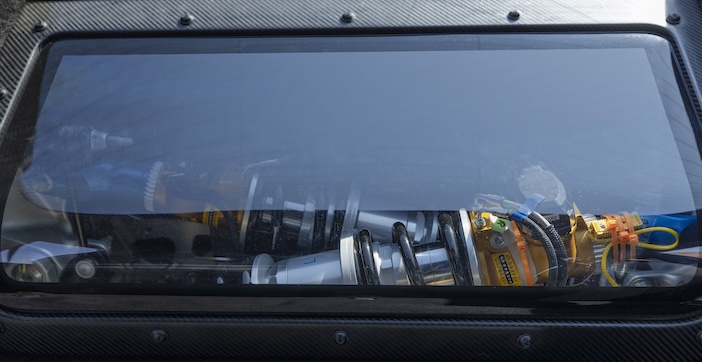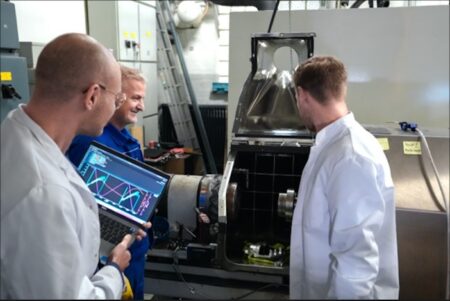The all-new 2025 Mustang GTD (Grand Touring Daytona) has been developed as a showcase for race-proven technology that can drive the development of road-going vehicles. The motorsport technologies range from active aerodynamics to a carbon-fibre body, magnesium wheels, and a rear transaxle.
The centrepiece of that race-to-road path in the GTD is its semi-active suspension, which Ford says is the feature that underpins it being the most track-capable production Mustang ever developed. Ford has decided that the artistry of the race-ready suspension should be shown off, so a ‘suspension window’ has been added to the car, a 24in x 10in polycarbonate window that enables owners to admire the blue and gold accents on the dampers without removing the tech panel, and the passenger to watch the suspension in action.
“We’ve never done a suspension like this on Mustang,” said Greg Goodall, Chief Program Engineer for the Mustang GTD. “To meet the aggressive lap time targets we set, we looked to motorsports for that inspiration to do something really advanced. The cutting-edge suspension and advanced dampers are key to turning a Mustang into a Mustang GTD.”
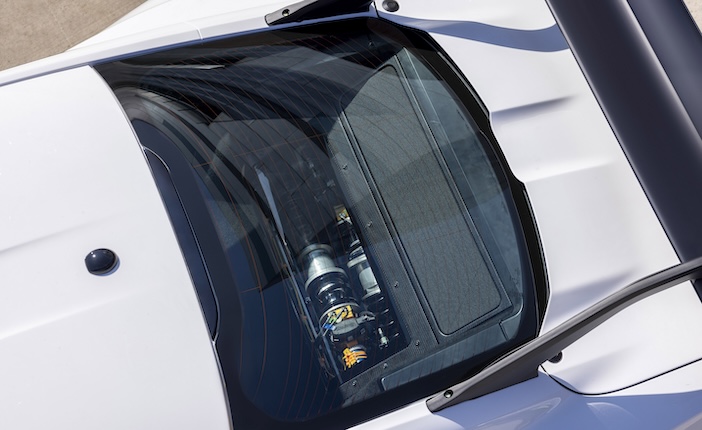
The inboard rear suspension – where the shocks and springs sit low and between the rear wheels rather than in line and above them – is an example of Ford bringing learnings from the track to the road, as is the strong, stiff, and weight-efficient motorsport-style tubular subframe. Ford says the addition of Multimatic’s proprietary Adaptive Spool Valve (ASV) dampers then goes beyond what is allowed in the world of racing.
Capable of going from their softest to firmest setting in just 15 milliseconds – six times quicker than the human eye can blink – the ASV dampers continuously adapt based on the drive mode, road surface, and driver inputs to maximise the Michelin tyres’ contact with the road.
“Adaptive damping allows more flexibility in absolute ride performance compared to a passive damper,” said Scott Keefer, vice president at Multimatic engineering, “It lets you decouple the ride versus handling compromise that you would normally make in damper tuning. Our system is a double win in that adjustments feel very analogue, very natural in terms of motion control.”
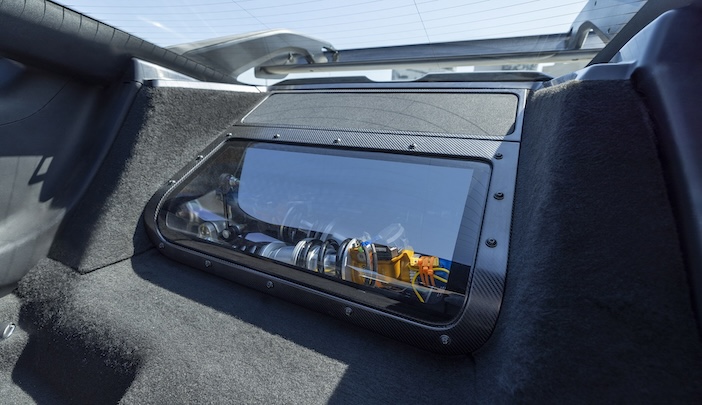
Each damper has two springs, and when driving on the road, they work together to allow a comfortable ride. Activating the driver-selectable Track mode hydraulically compresses one of the springs, nearly doubling the spring rate overall, and lowering the vehicle approximately 40mm (about 1.6 inches) to maximise capability on the track.
The stiffer spring rate aids mechanical grip, but just like on a race car, firmer springs also improve aerodynamic grip. As the Mustang GTD’s active aerodynamics press down on the car at high speeds, the firmer spring rates of Track mode counter aerodynamic squat and help keep the tyres’ contact patch as broad as possible while accelerating, braking and cornering.
The Mustang GTD will appear at the 24 Hours of Le Mans in June, before heading to the 24 Hours of Spa, and the Goodwood Festival of Speed. It will also spend the summer testing in Europe, before attempting an officially timed sub-seven-minute lap of Germany’s Nurburgring Nordschleife later this year.
